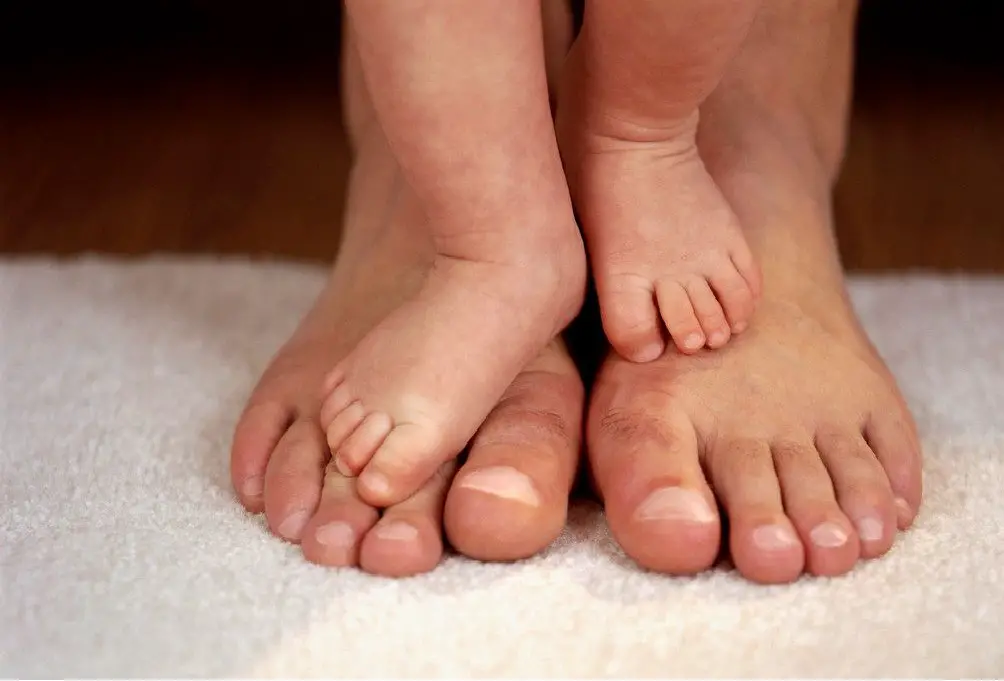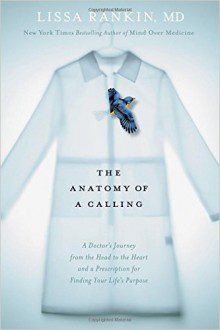November 27th, 2016
By Lissa Rankin
Guest writer for Wake Up World
This post is hard for me to write because it shines light on one of the core patterns I’ve spent years in therapy and years in prayer trying to break — the Savior Complex. For those of you who are familiar with ‘the drama triangle’, you know that drama tends to erupt whenever we inhabit any of three roles — the victim, the martyr, and the perpetrator. Here’s how the triangle tends to go…
Someone perceives herself as the victim, and she blames the perpetrator for her plight, feeling helpless, disempowered, hurt and angry. Then the martyr swoops in to save her; only this rescuing pattern stems from pity for the victim, not true compassion. It boosts the ego of the martyr, fluffing up the martyr’s feelings of self-worth, because, at the core, the martyr doesn’t feel whole and worthy unless she’s rescuing. Over time, the martyr gives and gives until she’s depleted and then she gets resentful because she has been rescuing others at the expense of her own self-care. Then she lashes out at the victim, becoming the perpetrator to the very victim she sought to help. Or she gets sick or depressed or financially depleted, demonstrating that she has perpetrated her own body or her own mental health or her own bank account. The martyr has now become the victim.
Nobody wins. If you play any of the three roles in the drama triangle, you will inevitably play all three.
[pro_ad_display_adzone id=”110028″]
But the drama triangle is vastly different than pure service. Pure service stems from a recognition of the Oneness in all of us and emerges from compassion, not pity. It recognizes that if one cell in the human family is suffering, the whole body is at risk. It doesn’t arise from underlying feelings of unworthiness or a “not enough” wound. Pure service doesn’t judge anyone as broken or see them as inferior to you. Pure service recognizes and tends the wholeness in everyone. It arises like a rush of “Shakti” (life force energy) and leaps you out of the chair to go serve your fellow human being. Pure service serves the giver as much as the recipient of the service. It blesses the giver with the feeling of deep fulfillment which arises when you know you are being used as a vessel of Divine love in the world. Rather than depleting you and leaving you feeling resentful, pure service may even energize you, leaving you feeling even more full because the Shakti that has flowed through you to bless the service fills you at the same time that you’re serving others. This doesn’t mean you should ignore any impulse to serve others. Pure service is a beautiful and natural extension of compassion, and we need compassionate service now more than ever on this planet.
Whether compassion motivates you to extend yourself in service to another person, a group of people, an endangered species, or a rainforest, pure service is how we bless life and allow it to bless us. But if you notice that you’re often motivated by this feeling that you need to save the world or everything will go to hell, or if you think giving until you’re depleted is how you get to heaven and live a moral life, or if you don’t trust others to handle things themselves, you might need to pause.
This doesn’t mean you should ignore any impulse to serve others. Pure service is a beautiful and natural extension of compassion, and we need compassionate service now more than ever on this planet. Whether compassion motivates you to extend yourself in service to another person, a group of people, an endangered species, or a rainforest, pure service is how we bless life and allow it to bless us. But if you notice that you’re often motivated by this feeling that you need to save the world or everything will go to hell, or if you think giving until you’re depleted is how you get to heaven and live a moral life or if you don’t trust others to handle things themselves, you might need to pause.
What is Motivating Your Service?
If you feel yourself compelled to help, fix, or rescue, stop before you leap into automatic action. Notice when the impulse to help arises, then notice your motivation. If you’re caught up in a Savior Complex like I was, you might need to resist the urge to extend yourself outwards and take time to gaze inwards for a while. You can read more about how Martha Beck confronted me with my own Savior Complex and how you can tell the difference between a Savior Complex and pure service in my article “Are You a Skanky Ho?” Or read about my reaction to a group of activists committed to saving the world here.
Ask yourself, “Why do I feel compelled to help here?” See if you notice any of the following Savior Complex motivations:
- Feeling pity for the other
- Fear of disappointing someone
- Approval-seeking
- Not feeling like you’re good enough unless you’re helping
- An attempt to manipulate someone into liking you by making yourself indispensable
- Fear that you won’t be lovable unless you’re helping someone
- Lack of trust in the other person (Are you sending a message that says “I don’t trust that you can help yourself?”)
If your impulse stems from any of these motivations, it’s an ego-based impulse that probably won’t uplift you or the one you think you’re helping. If you notice yourself cringing when you read this, be gentle. Make sure you don’t judge or criticize yourself. Don’t traumatize the little child inside of you that just wants to feel good enough. Love her instead. Love her big and hard and tell her she’s enough, just as she is.
Love the Wounded Child
Usually, a Savior Complex stems from a desperate, scared, hurt child inside of yourself. Often, that child was programmed to have a Savior Complex, either because the parents had Savior Complexes too, or because the child grew up feeling “not enough” and has spent a lifetime trying to find a way to finally feel worthy. If you could access the pain of that hurt child, she would probably weep in your arms because she’s so frustrated that no matter how hard she tries to be worthy, her attempts to help never seem to be enough. She’ll keep giving more and more, sacrificing her own needs to even more extreme lengths, until she hits a point of burnout, despair, illness, depression, loneliness, and desperation. She doesn’t realize that all she has to do is STOP. Just stop. Rest. Go inside. Pay attention to the part of you that has been spinning her wheels desperately trying to fill the hole of that “not enough” wound.
Notice the innocence of this part of you. Think back to any messages you received growing up that taught this little child that she was not enough unless she gave until she was depleted. Remember the first time you felt like you had to sacrifice your own needs to prioritize someone else’s needs. Recognize that this child doesn’t know better. She’s doing the best she can, so the worst thing you could do is judge this part. Instead, tend to that child with extreme love, holding her in the arms of the most compassionate, nurturing, unconditional love. Reassure her that she is whole and worthy, that she doesn’t need to do anything in order to earn her worthiness, that love is not in any way conditional upon giving until you’re depleted. (For guidance with nurturing this little child, you can download the free “Inner Child Meditation” I recorded as part of the Fulfill Your Calling Kit here).
Breaking the Pattern
Healing a Savior Complex is like putting an octopus to bed. I’ve been working on this pattern for ten years, and in the beginning, all eight of the octopus arms were above the covers. Now, I maybe have six of the eight arms under the covers, but periodically, I’ll notice another arm or two coming up. Instead of judging it, I have to just be aware, be soft, be loving with myself.
Laughing at yourself helps. “Oh, there she goes again!” I often giggle.
Understand that if you were deeply programmed with this pattern the way I was, with a family of doctors and missionaries and then twelve years of medical education, it will take time and diligence to break the pattern. You may find that you get it under control in your professional life, but then it erupts in your personal life. You’re likely to wind up in personal relationships with people who you deem as needing you. You’ll be at risk of being the lock to their key.
[pro_ad_display_adzone id=”110030″]
For example, I’ve been a magnet for attracting romantic relationships with men who were abandoned by their mothers. I wind up feeling like it’s my life purpose to prove to them that unconditional love is real. But my motivations for being in those relationships aren’t always pure. I have to remind myself that it would be just as okay to fall in love with a guy who had a healthy childhood or had already healed childhood wounds in therapy. I have had to fire myself from the temptation to be that one person who can love even the most seemingly impossible-to-love people.
It has been hard, painful work, and it has required ongoing vigilance and real surrender to Divine Will in order to navigate this kind of spiritual growth. But it’s worth it.
The Exquisite Gift of Pure Service
The reason this kind of inner work is worth it is that when you stop yourself from getting involved in drama triangles and you withdraw from anything that’s not pure service, you are blessed with the opportunity to let the Divine use you to be someone else’s miracle — and it feels fantastic! You don’t deplete yourself. You don’t feel like a martyr after serving. You’re not sick or depressed or broke or resentful afterward. You feel whole, fulfilled, and deeply grateful for the opportunity to be of service. You know that the service doesn’t even come from you — that you are the vessel that love pours through and that both the giver and the receiver are whole throughout the process and both are blessed by the interaction. You don’t get to claim credit for the service because it’s not actually you, the small self, doing the doing. It’s more like you’re being done by Something Larger, and you feel awe, not pity.
As Rachel Naomi Remen writes, “Serving is Different from Helping and Fixing.”
That doesn’t mean you won’t work hard. It doesn’t mean you won’t feel tired after a full day of service. But the feeling of fulfillment will make it all worthwhile, without any harmful consequences on your self-care. What is the difference between caretaking and being of service? HeatherAsh Amara says, “Caretaking is a habit that is easy to fall into that seems benign on the surface. But the truth is when we are caretaking we are acting out of a need to be needed: we believe others can’t do it without us. Caretaking is actually more about self-importance than empowering others. The art of service comes when we deeply listen, set our own opinion aside, and open for how we can support and ignite another’s inspiration and passion.”
Let me close this by inviting you to hold a paradox. The world doesn’t need you to save it. Yet the healing of the planet depends on your natural impulse to serve. You can retire the savior without damping down the natural love impulse to serve the wholeness in life. Realize that it’s not the small YOU that’s doing the service, that pure service arises from Love Itself using you as a vessel. You can rest in Beingness at the same time that you allow Something Larger to use you for the Doing. Therein lies the paradox that heals the Savior Complex.
Love,
Recommended reading from Lissa Rankin:
- Relationships on the Spiritual Path
- The “Space Between Stories”
- How to Make Your Body Ripe for Miracles
- Are You “Spiritual But Not Religious?”
- A Lesson In Empathy
- 9 Practical Tips to Help You Find Your Calling
- 10 Fun Ways to Reduce Your Cortisol Levels
- 6 Stories To Make You Believe In The Power Of The Mind To Heal You
- 7 Tips For Finding Your Tribe
- 10 Surprising Things That Trigger “Fight-Or-Flight”
- How To Keep Your Heart Open When You Lose a Pet
- 8 Signs You’ve Lost Touch with Your Intuition – and 10 Tips to Help You Reconnect
About the author:
 Lissa Rankin, MD is a mind-body medicine physician on a grass roots mission to heal healthcare, while empowering you to heal yourself. She is the founder of the Whole Health Medicine Institute training program for physicians and healthcare providers, and the New York Times bestselling author of the books Mind Over Medicine: Scientific Proof That You Can Heal Yourself (2013), The Fear Cure (2014), and The Anatomy of a Calling (2015).
Lissa Rankin, MD is a mind-body medicine physician on a grass roots mission to heal healthcare, while empowering you to heal yourself. She is the founder of the Whole Health Medicine Institute training program for physicians and healthcare providers, and the New York Times bestselling author of the books Mind Over Medicine: Scientific Proof That You Can Heal Yourself (2013), The Fear Cure (2014), and The Anatomy of a Calling (2015).
Lissa blogs at LissaRankin.com and created the online community HealHealthCareNow.com. She is also the author of several other books, a speaker, a professional artist, an amateur ski bum, and an avid hiker. She lives in the San Francisco Bay area.
Connect with Lissa on Facebook and Twitter, or visit LissaRankin.com.
The Anatomy of a Calling:
The new book by Lissa Rankin, MD.
We are all on a mission to step into our true nature and fulfill the assignment our souls were sent to Earth to fulfill.
In her new book The Anatomy of a Calling: A Doctor’s Journey from the Head to the Heart and a Prescription for Finding Your Life’s Purpose, Lissa describes her entire spiritual journey for the first time — beginning with what she calls her “perfect storm” of events — and recounts the many transformative experiences that led to a profound awakening of her soul. Through her father’s death, her daughter’s birth, career victories and failures, and an ongoing struggle to identify as both a doctor and a healer, Lissa discovers a powerful self-awareness.
As she shares her story, she encourages you to find out where you are on your own journey, offering inspiring guideposts and practices along the way. With compelling lessons on trusting intuition, surrendering to love, and learning to see adversity as an opportunity for soul growth, The Anatomy of a Calling invites you to make a powerful shift in consciousness and reach your highest destiny.
Lissa Rankin’s book “The Anatomy of a Calling” is available here on Amazon.
[pro_ad_display_adzone id=”110027″]











